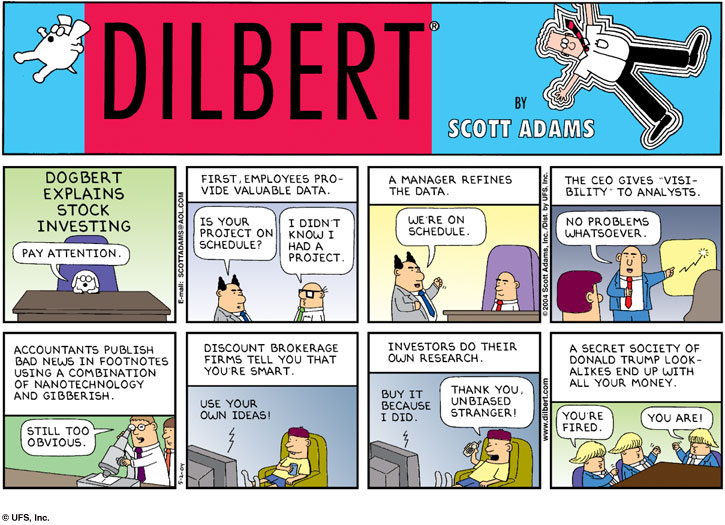Wie es wirklich um die us-amerikanische Finanzwelt steht, gibt ein köstlich geschriebenes Stück von Eric Fry preis:
But modern American-style capitalism is more like “arts and crafts” time in one of Manhattan’s pricey nursery schools. Every coddled kiddy’s “artistic” creation – no matter how inept or ghastly it may be – elicits praise from the nursery school instructors. […]
Outside the walls of the nursery school, capitalism is just as brutal and Darwinian as it has always been, perhaps even more so. But on the inside, the privileged kiddies never shed a tear without receiving an immediate hug and a “There, there. It’s okay. It wasn’t your fault… and even if it was your fault, Uncle Ben will make it all better.”
Quelle: U.S. Fed Bailout Corroding Capitalism and the U.S. Dollar
Lustig, dass die Überzeugungen und Werte der 68er schlussendlich auch im Mikrokosmos der Finanzwelt Einzug gehalten haben: Antiautoritäre Erziehung, überschwängliches Lob, keine Verlierer (nun, selbstverständlich gibt es Verlierer – es sind dies aber nicht diejenigen, die den Mist erst ermöglicht und später so richtig angefeuert haben).
Was ist das grundsätzliche Ziel eines Kapitalmarktes?
Everyone called it a rescue plan for the capital markets. But the capital markets of 1998 required no rescuing. They had worked flawlessy; they had separated fools from their money.
Einfacher hätte man es nicht ausdrücken können. Dies erinnert mich zugleich an ein Dilbert-Comic:
(Klick, um das Bild zu vergrössern)
Quelle: unbekannt
Dogbert Explains Stock Investing
- First, employees provide valuable data.
- A manager refines the data.
- The CEO gives „visibility“ to analysts.
- Accountants publish bad news in footnotes using a combination of nanotechnology and gibberish.
- Discount brokerage firms tell you that you’re smart.
- Investors do their own research.
- A secret society of Donald Trump look-alikes end up with all your money.

